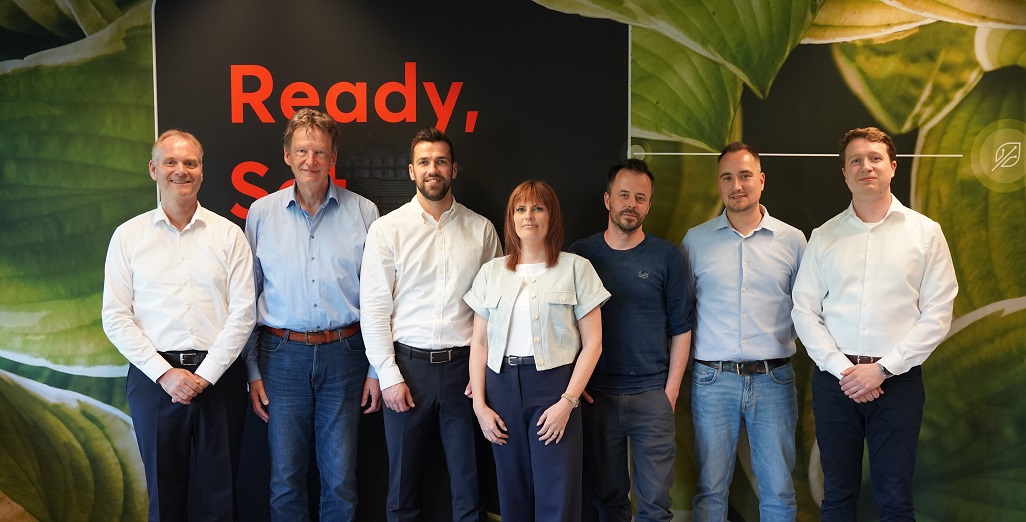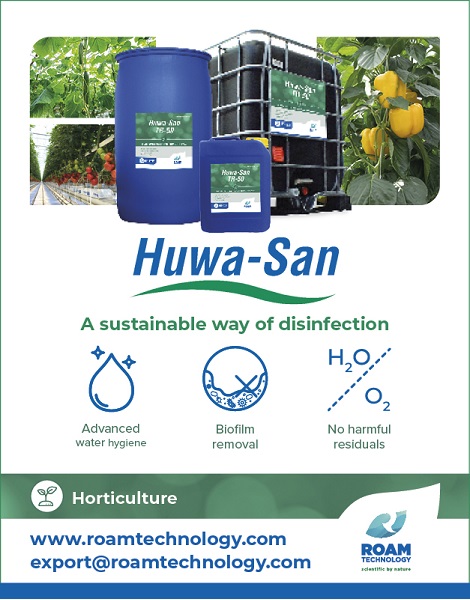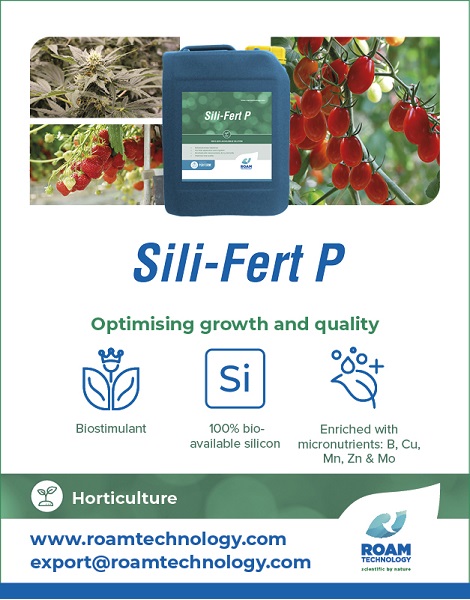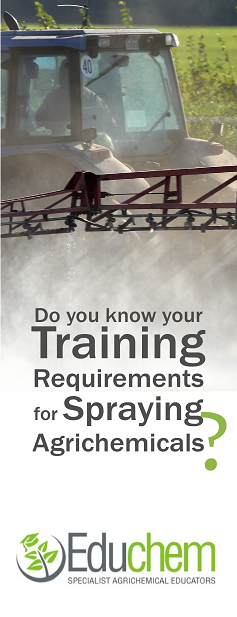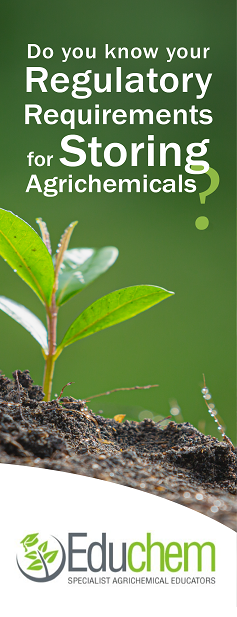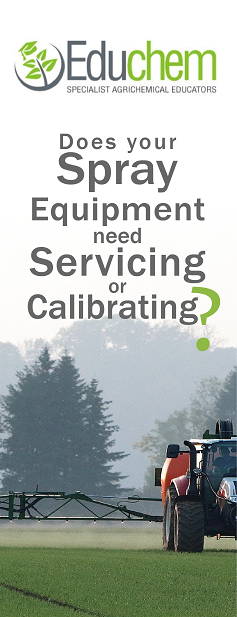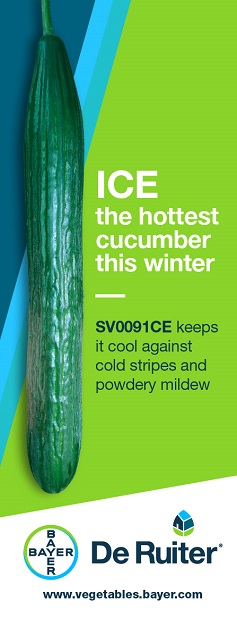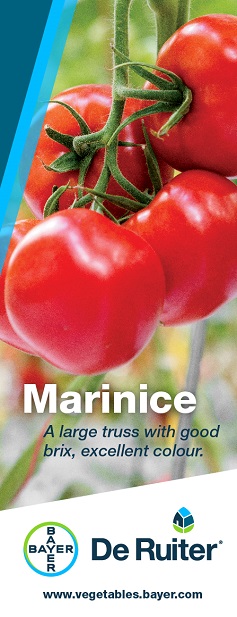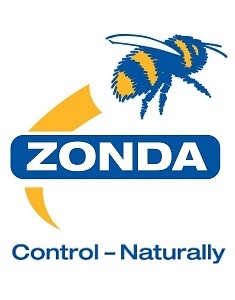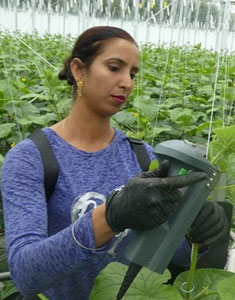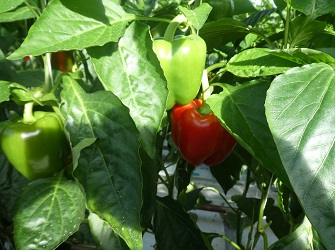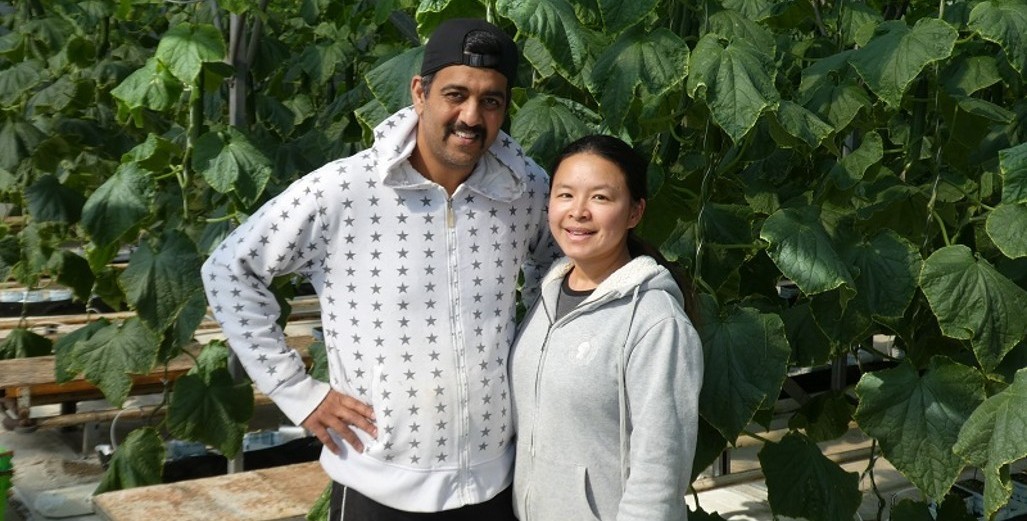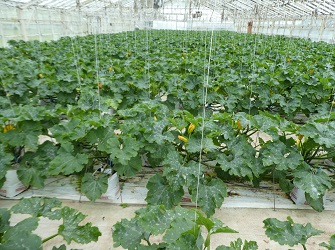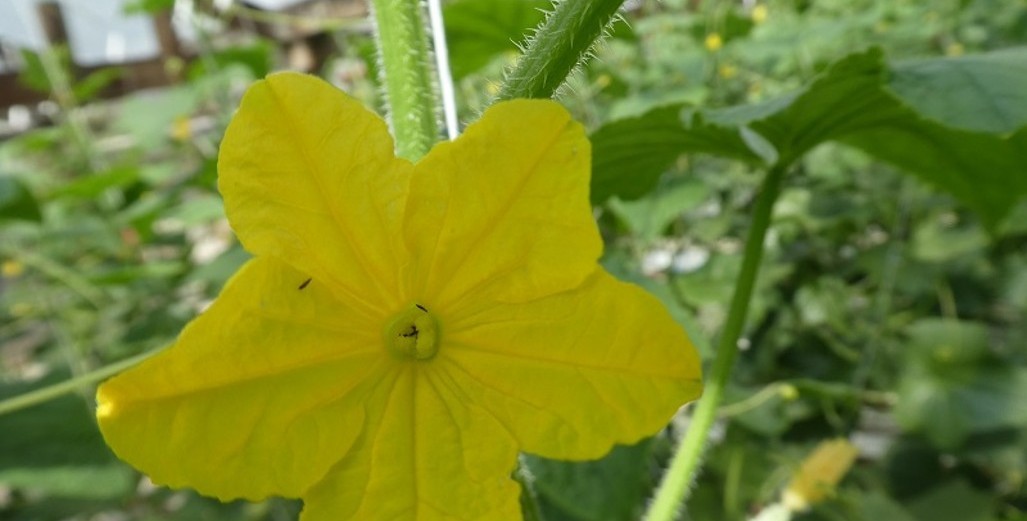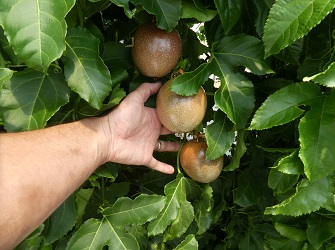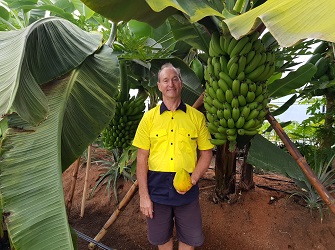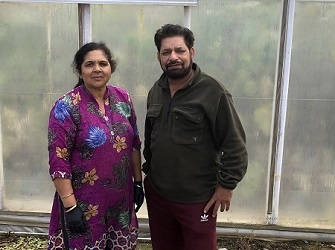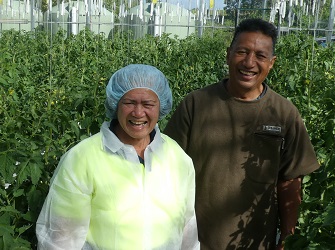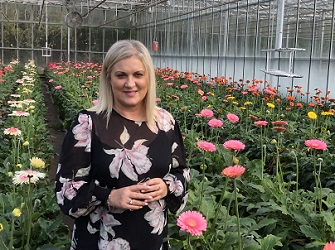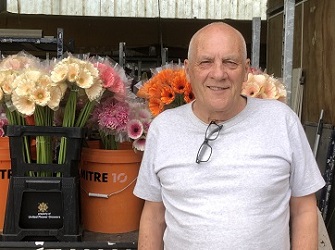Sign up here to subscribe to the Grower2grower Ezine. Every two weeks you will receive new articles, specific to the protected cropping industry, informing you of industry news and events straight to your inbox.
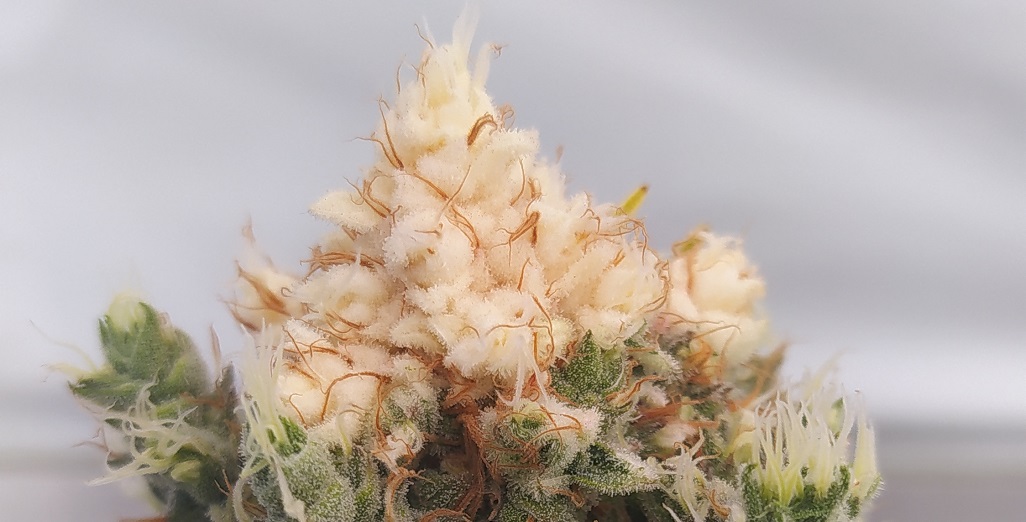
In cannabis cultivation, white tips are mostly regarded as less favorable than green tips. Green is associated with healthier plants and more appealing to consumers. However, research by Signify over the past few years has resulted in surprising new insights. There appear to be two types of white tips, caused by different mechanisms. One of them correlates with higher THC/CBD levels. Fortunately, these ‘profitable’ white tips can be induced (or avoided) by specific light strategies.
Photobleaching
Yes, there are two types of white tips in cannabis. The first type is known as photobleaching. It is induced by a mismatch between (high) light intensity and climate or irrigation conditions, causing stress. As a result, the green pigment (chlorophyl) in the top flowers starts to decay. Eventually, this so-called chlorophyl chlorosis makes the affected area look white. After re-establishing the light to climate balance, photobleaching will gradually disappear in the subsequent growth cycles.
In other words, photobleaching starts with a green plant, is a result of stress-induced chlorophyl chlorosis and will disappear after re-establishing the balance between light intensity and other growing conditions. Although light intensity plays a significant role, photobleaching is not related to specific light spectra.
‘True’ white tips
The second or ‘true’ white tips phenomenon is quite different from photobleaching. Like many specialists, we initially assumed that the observed white tips referred to the familiar photobleaching and decay mechanism. Looking closer into it we discover the flowers were never green to begin with; the flowering tips (meristem) don’t contain green pigments at all. They start white and will grow white to the end. Two years ago, this phenomenon had not been reported or studied in-depth by academics. Signify decided to take up the challenge as to develop right light solutions we must understand the mechanisms.
We revealed a relation with absolute amounts of red light, irrespective of the spectral composition of the luminaire. After two years of testing and validation, we are convinced that this second and different mechanism is a reality.

Red-light threshold
Our research has proven that true white tips occur after crossing a threshold in absolute amount of red light at the top of the plant in the crucial weeks for flowering. Do not confuse red light only with PAR light, this is specific for red light only. It will happen under any type of grow light (LED, HPS or combinations) and under any light intensity, as soon as the absolute amount of red light exceeds the triggering value in µmol/m2. What a surprise!
Brainstorming with experts in the field, we are inclined to think that true white tips are a sort of mutation at the tip of the plant branches (meristem). This is a new phenomenon for most scientists and the mutation physiology should be subject to more fundamental research in the future.
True white tips and their chemistry
When selling cannabis flower tips, we know that white color lowers the bag appeal and its market value in many regions. However, the THC and/or CBD levels in true white tips are very often higher than in the equivalent green tips buds of the same plant. Therefore, a true white tip could (or should) be sold as a highly valued specialty product. This is especially interesting when growing cannabis for extraction purposes and the tips appearance is less relevant.

Variety dependent
Like photobleaching, white tips formation is variety dependent. While some varieties do easily produce white tips, others won’t. Not all varieties are as sensitive for red intensities, a challenging task to address ahead of project as often no one knows if the breed is sensitive to it. Unlike photobleaching, white tips appearance is unavoidable when triggered, so it is crucial to find suitable spectral solutions to prevent them when the growers aim is to prevent them. When changing the color spectrum or adjusting the level of red during the crucial weeks of flower induction, the next plant cycles will not be affected. Selecting mother plants that are more or less sensitive to this phenomenon, can be part of well-defined strategies to either avoid or enhance white tips.
From insights to tailor made strategies
If this proposition is appealing to growers or not, will depend on their market focus (extraction or flower buds) customer preferences. Fact is that either way growers can use our state-of-the-art knowledge, experience and light solutions to optimize their cannabis growing and lighting strategies. For instance, our Philips technology based full LED solutions are perfectly suited for energy-efficient strategies with high amounts of red light, making it easier to grow with or without white tips while reducing energy costs. The Philips GrowWise control system enlarges your span of control on light strategies during each growth stage and cycle, enabling you to maximize profit.

Interested? Call us or send an e-mail for advice. We’ll get in touch.
 Sabrina Carvalho is a Plant Specialist for the biobased segment at Signify Horticulture LED Solutions. She has a background in academic plant research, and she now applies that knowledge to translate scientific information and research performed at Signify into value for growers. She has collaborated with researchers, innovators and growers, not only to develop and improve Philips LED lighting technologies, but also to find new and innovative ways to study plants.
Sabrina Carvalho is a Plant Specialist for the biobased segment at Signify Horticulture LED Solutions. She has a background in academic plant research, and she now applies that knowledge to translate scientific information and research performed at Signify into value for growers. She has collaborated with researchers, innovators and growers, not only to develop and improve Philips LED lighting technologies, but also to find new and innovative ways to study plants.
For further information, please contact:
Philips horticulture LED solutions by Signify
Daniela Damoiseaux – global marcom manager
Tel: +316 40578311
E-mail:Daniela.damoiseaux@signify.com
About Signify
Signify (Euronext: LIGHT) is the world leader in lighting for professionals and consumers and lighting for the Internet of Things. Our Philips products, Interact connected lighting systems and data-enabled services, deliver business value and transform life in homes, buildings and public spaces. In 2021, we had sales of EUR 6.9 billion, approximately 37,000 employees and a presence in over 70 countries. We unlock the extraordinary potential of light for brighter lives and a better world. We achieved carbon neutrality in 2020, have been in the Dow Jones Sustainability World Index since our IPO for six consecutive years and were named Industry Leader in 2017, 2018 and 2019. News from Signify is located at the Newsroom, Twitter, LinkedIn and Instagram. Information for investors can be found on the Investor Relations page.
New Zealand Contact:
Graeme Neale
Business Development Manager
Specification, Systems and LED Agriculture Solutions
Mobile + 64 21 2254526
Email graeme.neale@signify.com
Level 3, 123 Carlton Gore Road,
Newmarket, Auckland 1023

Australian Contact:
Aart Slobbe
Account Manager Horticulture LED Solutions
+ 61 448 881 338
Email aart.slobbe@signify.com
Suite 022, 44 Lakeview Drive
Scoresby, VIC 3179, Australia

About Signify
Signify (Euronext: LIGHT) is the world leader in lighting for professionals and consumers and lighting for the Internet of Things. Our Philips products, Interact connected lighting systems and data-enabled services, deliver business value and transform life in homes, buildings and public spaces. With 2020 sales of EUR 6.5 billion, we have approximately 38,000 employees and are present in over 70 countries. We unlock the extraordinary potential of light with smart lighting solutions that improve quality of life, and by working towards a sustainable future. We became a carbon-neutral company in 2020, since our stock market listing, we have been in the Dow Jones Sustainability World Index for four years in a row and were named Industry Leader in 2017, 2018 and 2019. News from Signify is located at the Newsroom, Twitter, LinkedIn and Instagram. Information for investors can be found on the Investor Relations page.
For all media releases please send to marie@grower2grower.co.nz or upload directly: https://www.grower2grower.co.nz/article-form/
CLASSIFIED
Photo
Gallery
Subscribe to our E-Zine
More
From This Category
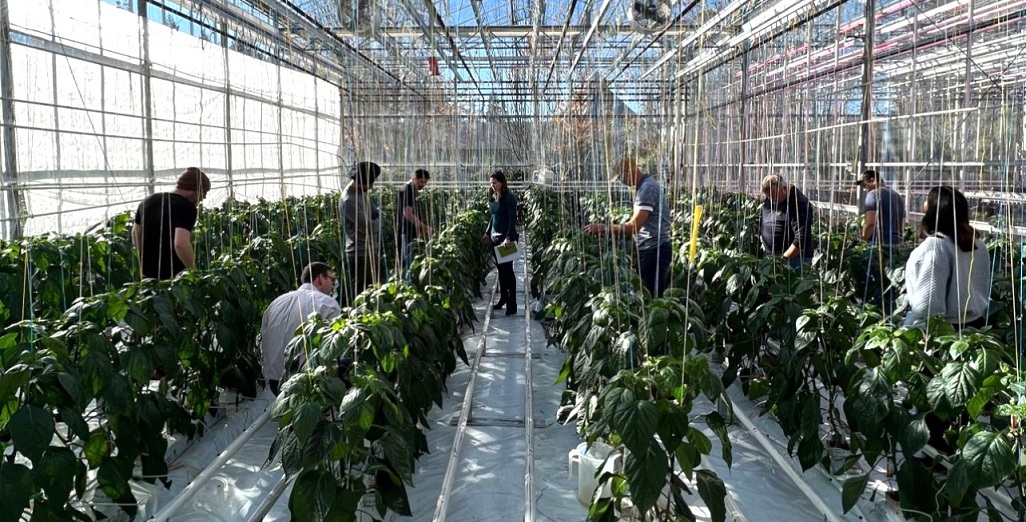
Increasing year-round Capsicum yields through advanced LED lighting
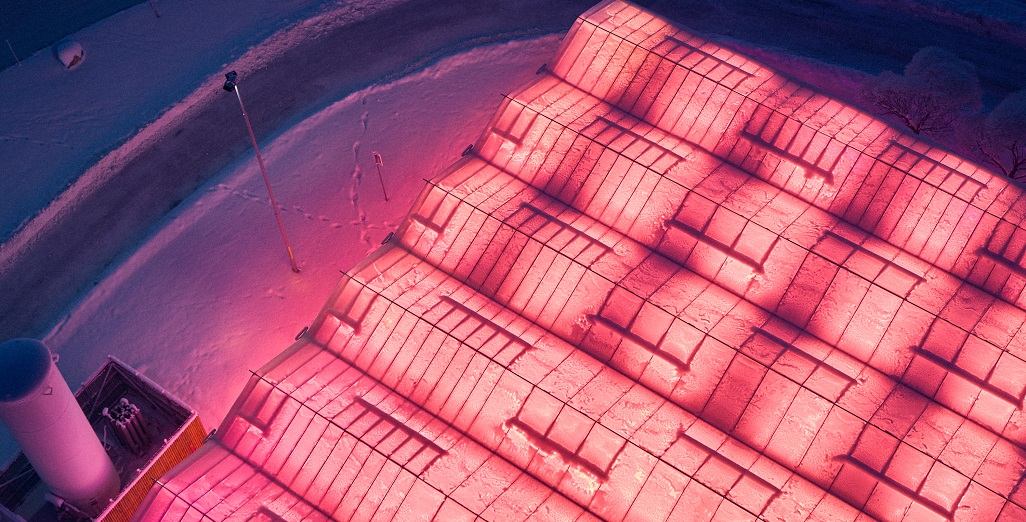
Signify helps Agtira to bring locally grown cucumber to Swedish market
Dimmable Philips LED top-lighting fixtures support maximum efficiency and better use of energy
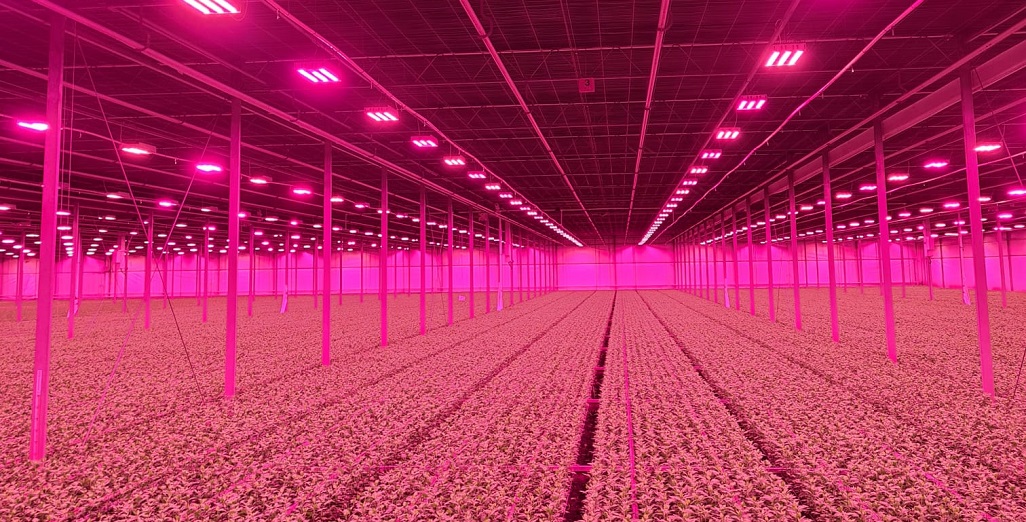
Integration of Philips GrowWise control system with climate computer allows Huisman Chrysanten to light more effectively and efficiently
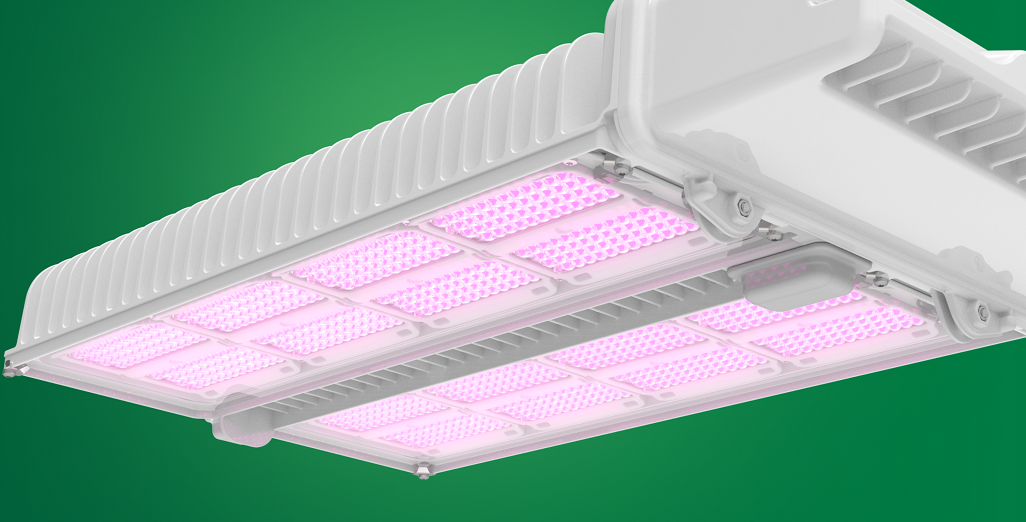
New Philips GreenPower LED toplighting force 2.0
